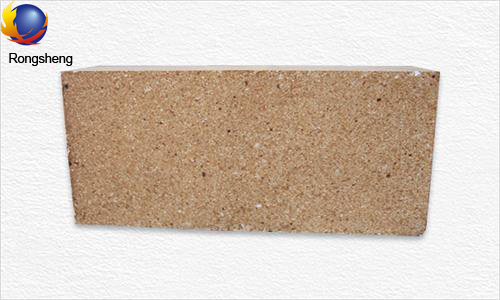Low Creep High Aluminum Brick in Hot Air Stove Introduction

The low creep high alumina fire brick is made of high quality high alumina bauxite clinker as the main raw refractory material, the three-stone raw material for improving creep resistance is added, and the mud refractory material is configured to be formed by high pressure molding and high temperature firing.
Because the heat storage capacity of low creep high aluminum bricks is higher than that of clay bricks and silica bricks, hot blast stoves generally use low creep high aluminum perforated bricks and other types of refractory bricks with high heat storage capacity. It is compact and reduces the floor space. This is particularly advantageous for retrofitting hot air stoves because it avoids the need to increase the heat storage capacity of the hot blast stove to make the structure of the hot blast stove large, while avoiding the limitations of existing sites.
The development of high thermal shock and low creep high alumina bricks is based on the synthesis of M45 mullite fire brick as the main raw refractory material, and the matrix is added with Molai M75 fine powder. Reasonable selection of three stone raw refractory materials, refractory soil as binder, scientific design components, research and development Under 1100 ° C water-cooling conditions, the thermal shock stability is greater than 55 times (only fine mesh patterns appear), 1350 ° C * 0.2 MPa, 20 ~ 50 h creep rare < 0.2% about high thermal shock low creep high chrome brick.
With the development of modern smelting technology, hot blast stoves generally adopt high air temperature technology, and the service life of hot blast stoves is required to be longer: therefore, higher requirements are put forward for the comprehensive performance of refractory materials for hot blast stoves. Damage to refractory materials used in hot blast stoves is usually caused by thermal stress, chemical attack, and mechanical loading. It is generally believed that an important reason for the damage of the hot blast stove is that the high temperature creep resistance of the refractory material is poor, resulting in collapse, deformation and cracking of the lining refractory material, thus causing widespread concern for low creep bricks for hot blast stoves.
In recent years, people have gained a deeper understanding of the damage of hot blast stoves. Because the lining refractory materials are repeatedly subjected to repeated thermal and thermal stresses, the cracks, cracks and spalling of the masonry are caused, resulting in damage to the hot blast stove. The resistance to thermal expansion of refractory materials has attracted more and more attention. It is believed that the thermal shock resistance of materials is another important indicator for influencing the life of hot stoves. Therefore, we have developed high aluminum bricks for high thermal shock and low creep hot blast stoves to meet the needs of steel companies.
High alumina bricks for hot blast stoves include: H-21, H-22, H-23, H-24, H-26, H-27 and H-31, and H-21 is a low creep high alumina brick. Quality products in the series. In the early years, the development method was to use a combination of non-equilibrium states, which was used in the firing of mullite brick to minimize the glass phase content, and was called a “one-step synthesis process”. The model of the corundum refractory brick for the blast furnace body is HRD.
Study on creep properties of low creep high alumina brick for hot blast stove
The creep resistance of low creep high alumina bricks for hot blast stoves is an important physical performance indicator to measure their advantages and disadvantages:
1. The higher the purity, the better the creep resistance; the more impurities, the worse the creep resistance.
2. The higher the crystal phase/glass ratio, the better the creep resistance, and vice versa.
3. The finer the grain of the crystal phase, the more grain boundaries, the finer the particles, and the worse the creep resistance.
4. The higher the temperature of the glass phase is formed, the higher the viscosity, and the better the creep resistance.
5. The crystal phase is needle-like, rod-shaped, column-like network crossover, and the creep resistance is better.
6. There is no reaction or dissolution between the crystalline phase and the glass phase, and generally the creep resistance is better.
7. The reducing atmosphere is worse than the oxidizing atmosphere, or the creeping rate is faster, and the creep resistance is higher.


